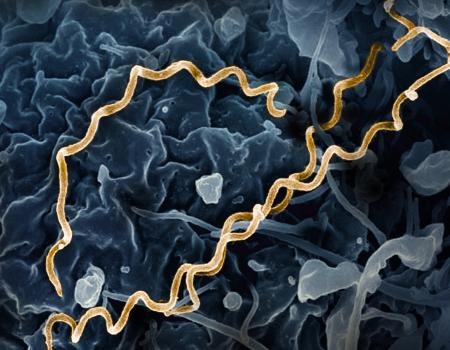Data from Alberta Health suggests the province’s syphilis outbreak response is finally having an impact.
In 2019, Alberta Health declared a syphilis outbreak after recording levels of infections not seen since the 1940s. A report from Alberta Health shows there were 2,723 new cases diagnosed in 2023, down from 3,326 the year before.
Though these statistics are still several times higher than the 140 cases recorded in 2014 before the outbreak began, researchers and provincial health agencies say it’s a positive sign.
What exactly is responsible for this 18 per cent decline is “a million-dollar question,” said infectious disease specialist Dr. Ameeta Singh.
“I am of the opinion that the interventions that have been put in place are starting to now have an impact. The most important of those interventions has been the introduction of point-of-care testing for syphilis,” Singh said.
Singh oversaw clinical trials for rapid tests that can provide preliminary results for syphilis in less than a minute, allowing health practitioners to start treatment immediately rather than having to book a follow-up appointment. The device has now been approved by Health Canada, and at the end of 2022, point-of-care testing was expanded to acute care facilities and community settings in Alberta.
More than 4,000 of these tests have now been completed, and Singh says she believes access to rapid testing and treatment are part of the reason for the decline in reported infections.
“Of course, that's not the only intervention that's been put in place. A number of other things have happened concurrently,” she said. Alberta Health has also provided funding for community organizations to raise awareness among high-risk populations and groups disproportionately affected by syphilis.
Singh said her team are hoping to do more detailed evaluations to determine why the number of infections are declining, and she expects they will have a more conclusive answer in the months ahead.
Rural, remote, and Indigenous communities have often been disproportionately affected by the syphilis outbreak, in part owing to limited health care access and the geographic or structural barriers that prevent people from getting testing and treatment. The North Zone continues to have the highest rate of syphilis infection in the province, with 132.4 cases per 100,000 population. For comparison, Edmonton Zone had the second highest rate of infection in 2023 with 64.4 cases per 100,000 population.
A spokesperson for Alberta Health said the government provides $3.2 million annually for syphilis outbreak response, which includes funding for enhanced outreach activities to increase awareness around access to testing, treatment, and prenatal screening.
“Alberta's government also provides $2 million to organizations that target populations and geographic areas experiencing higher rates of infectious syphilis or congenital syphilis, which includes mobile STBBI (sexually transmitted and blood borne infection) testing, treatment, and education projects in the North Zone,” the spokesperson said.



